Chris, what does Heartbleed mean for the security community?
Chris Poulin: Heartbleed was more of a warning than the apocalyptic event that some reactionaries predicted it would be when first announced. The good news is that there weren't any catastrophic breaches due to Heartbleed – at least none that we know of.
What we do know is that most mature enterprises took appropriate steps to protect themselves by quickly revoking certificates in case they were compromised, patching the applications affected by vulnerable versions of OpenSSL, and notifying users to change their passwords and look for signs of account compromise. On the other hand, many organizations are still vulnerable or they simply acquired a new certificate, leaving the potentially compromised one available for attackers to impersonate their Web sites and applications.
Hopefully the lessons learned are making organizations rethink their security processes by taking inventory of assets to include certificates, collecting complete forensics information in advance to be able to perform rapid and accurate impact analysis, and updating incident response processes. Also, Heartbleed has caused organizations to reevaluate use of open-source software and libraries, as well as shed a light on code development and review processes. Finally, it's pointed out the shortcomings of the certificate revocation mechanism when subjected to a broad volume of requests.
You recently announced IBM Security QRadar Incident Forensics. How can this help companies?
Chris Poulin: QRadar Incident Forensics (QRIF) is critical for the type of rapid and accurate impact analysis that's needed for post-incident response.
Taking the Heartbleed vulnerability, for example, QRIF can help enterprises go back in time and determine if they've been attacked by an asymmetric TLS heartbeat request -- or not -- and to drive their response to customers. Or, in the case of many of the large retailer breaches, QRIF speeds up the time to determine how an attacker breached their systems, allowing the victim organizations to close the avenue of attack and notify their customers, oversight entities, and the press with confidence. Definitive and timely communication to the world is key to regaining the public trust and mitigating brand reputation damage, maintaining customer loyalty, and stemming potential financial losses.
QRIF can also be used proactively to mine data and detect signs of attack, including 0days, as well as identify rogue internal activities, such as an employee stealing intellectual property or malware exfiltrating data. Coupled with security intelligence, organizations can identify not only the potential for malicious activity and conclusive evidence of a successful attack, but also what accounts or data were affected.
You'll be at Black Hat USA 2014. What are you excited about at the show, and how can companies connect with you there?
Chris Poulin: IBM is delighted to be part of Black Hat USA 2014 as this event has become a strong platform for IT experts and specialists to meet, share expertise and insight, and gain a deeper understanding of the security technologies and trends. IBM Security offers one of the most advanced and integrated portfolios of enterprise security products and services. This security framework, supported by world-renowned IBM X-Force research and development, provides actionable intelligence to help organizations holistically protect their critical assets and infrastructure, offering solutions across security intelligence and analytics, identity and access management, network, database and application security, fraud protection, risk management, endpoint protection, managed services, and more. These capabilities and services are delivered through a comprehensive and robust set of tools and best practices, delivering distinct value throughout the process.
We hope everyone will join us in our workshops and visit our booth to see a live demonstration and how these solutions can help enable a secure enterprise.








